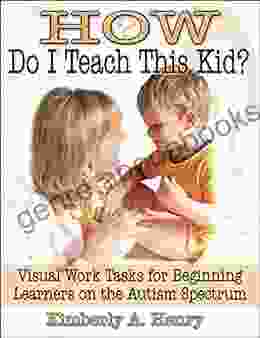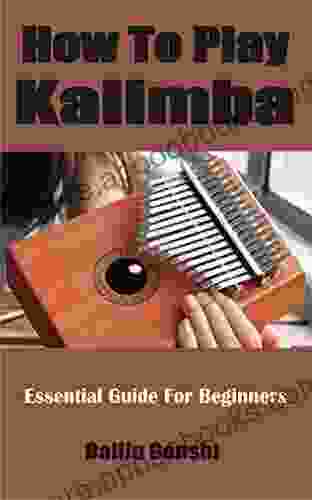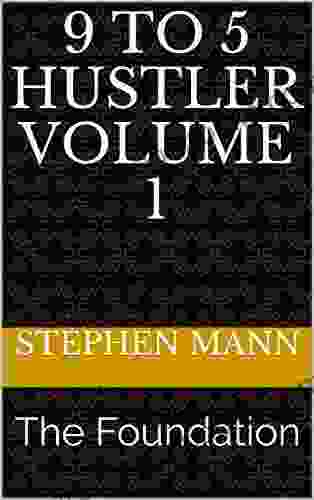Visual Work Tasks For Beginning Learners On The Autism Spectrum

For children on the autism spectrum, visual work tasks offer a powerful tool to enhance their learning journey. These tasks provide structured, visual representations of instructions and expectations, making it easier for individuals to understand and complete tasks independently. This comprehensive guide delves into the world of visual work tasks, exploring their benefits, practical applications, and the transformative impact they can have on the development of beginning learners.
Benefits of Visual Work Tasks
- Enhanced understanding: Visuals simplify complex concepts and instructions, making them more accessible for learners.
- Reduced anxiety: Clear visual cues alleviate anxiety by providing predictable and structured tasks.
- Improved communication: Visual representations bridge the gap between verbal communication and understanding.
- Increased independence: Visual work tasks empower learners to work more independently, fostering a sense of accomplishment.
- Cognitive development: Visual work tasks strengthen cognitive skills such as problem-solving, sequencing, and memory.
Types of Visual Work Tasks
Visual work tasks can take various forms, tailored to the individual needs of the learner. Common types include:
4.8 out of 5
| Language | : | English |
| File size | : | 13555 KB |
| Text-to-Speech | : | Enabled |
| Screen Reader | : | Supported |
| Enhanced typesetting | : | Enabled |
| Print length | : | 220 pages |
- Picture schedules: Step-by-step visual representations of daily routines or activities.
- Social stories: Illustrated stories that teach social skills and behavior expectations.
- Task analysis: Breaking down complex tasks into smaller, manageable steps with visual cues.
- Visual recipes: Illustrated instructions for cooking or baking activities.
- Choice boards: Offering choices between activities or tasks to promote engagement.
Creating Effective Visual Work Tasks
To maximize the benefits of visual work tasks, it's essential to create them effectively. Consider the following guidelines:
- Use clear and concise images: Opt for simple, realistic images that accurately reflect the task.
- Provide sufficient detail: Include all necessary information to guide the learner through the task.
- Organize visually: Use color coding, arrows, and clear headings to structure the task.
- Laminate or protect: Ensure durability and longevity of the visual work tasks.
- Personalize: Tailor tasks to the individual interests and strengths of the learner.
Practical Implementation
Incorporating visual work tasks into learning environments requires a thoughtful approach. Here are some practical tips:
- Introduce gradually: Start with simple tasks and gradually increase complexity as the learner progresses.
- Provide support: Initially, offer verbal or physical guidance to reinforce understanding.
- Encourage independence: As the learner becomes familiar with the task, gradually reduce support.
- Monitor progress: Regularly observe and assess the learner's engagement and understanding.
- Collaborate with team: Share visual work tasks with teachers, therapists, and parents for consistency.
Case Studies and Success Stories
Numerous case studies and success stories attest to the transformative impact of visual work tasks for learners on the autism spectrum.
One study found that students using visual schedules improved their attention, on-task behavior, and social interactions significantly.
Another study demonstrated that individuals with autism who used visual recipes experienced increased independence in cooking and reduced anxiety related to food preparation.
Visual work tasks are an invaluable tool for empowering beginning learners on the autism spectrum. By providing clear visual instructions, reducing anxiety, and fostering independence, these tasks unlock learning potential and promote developmental growth. Educators, parents, and therapists can harness the power of visual work tasks to create an inclusive and supportive learning environment where all students can thrive.
Call to Action
Embark on a journey to transform learning for beginning learners on the autism spectrum. Download your copy of "Visual Work Tasks For Beginning Learners On The Autism Spectrum" today and discover the wealth of strategies and resources to empower your students or child to reach their full potential.
4.8 out of 5
| Language | : | English |
| File size | : | 13555 KB |
| Text-to-Speech | : | Enabled |
| Screen Reader | : | Supported |
| Enhanced typesetting | : | Enabled |
| Print length | : | 220 pages |
Do you want to contribute by writing guest posts on this blog?
Please contact us and send us a resume of previous articles that you have written.
 Book
Book Novel
Novel Page
Page Chapter
Chapter Text
Text Story
Story Genre
Genre Reader
Reader Library
Library Paperback
Paperback E-book
E-book Magazine
Magazine Newspaper
Newspaper Paragraph
Paragraph Sentence
Sentence Bookmark
Bookmark Shelf
Shelf Glossary
Glossary Bibliography
Bibliography Foreword
Foreword Preface
Preface Synopsis
Synopsis Annotation
Annotation Footnote
Footnote Manuscript
Manuscript Scroll
Scroll Codex
Codex Tome
Tome Bestseller
Bestseller Classics
Classics Library card
Library card Narrative
Narrative Biography
Biography Autobiography
Autobiography Memoir
Memoir Reference
Reference Encyclopedia
Encyclopedia Samuel Moyn
Samuel Moyn James Callan
James Callan Nir Eyal
Nir Eyal Richard Baker
Richard Baker Thomas Mark Szelog
Thomas Mark Szelog Phillip Tomlinson
Phillip Tomlinson Rosie Weldon
Rosie Weldon Skawt Chonzz
Skawt Chonzz Nick Airus
Nick Airus Walter Russell Mead
Walter Russell Mead Pj Fiala
Pj Fiala Sam Tracy
Sam Tracy Shannon Schuren
Shannon Schuren Maggie Nelson
Maggie Nelson M L Ryan
M L Ryan Leah Wright Rigueur
Leah Wright Rigueur Micere Keels
Micere Keels Richard B Craig
Richard B Craig Laura Lohman
Laura Lohman Oxana Schmies
Oxana Schmies
Light bulbAdvertise smarter! Our strategic ad space ensures maximum exposure. Reserve your spot today!

 Dominic SimmonsFlesh and the Centrality of the Eucharist to the Divine Comedy: Unraveling...
Dominic SimmonsFlesh and the Centrality of the Eucharist to the Divine Comedy: Unraveling... Joseph HellerFollow ·3.9k
Joseph HellerFollow ·3.9k Danny SimmonsFollow ·13.6k
Danny SimmonsFollow ·13.6k Deion SimmonsFollow ·6.6k
Deion SimmonsFollow ·6.6k Tim ReedFollow ·6.2k
Tim ReedFollow ·6.2k J.R.R. TolkienFollow ·12.4k
J.R.R. TolkienFollow ·12.4k Jayden CoxFollow ·9.3k
Jayden CoxFollow ·9.3k George Bernard ShawFollow ·19k
George Bernard ShawFollow ·19k Chinua AchebeFollow ·15.8k
Chinua AchebeFollow ·15.8k

 Finn Cox
Finn CoxCarmen Suite For Flute Quartet (G Alto Flute) ( Carmen...
Experience the Magic of...

 Andy Cole
Andy ColeUncover Hidden Truths: A Comprehensive Guide to Detecting...
: The Silent...

 Ken Simmons
Ken SimmonsUnleash Your Potential: Transform Frustration and...
Are you tired of feeling...

 Rick Nelson
Rick NelsonHard To Kill: A Gripping Thriller That Will Keep You on...
Tom Rollins is a...

 Ivan Turner
Ivan TurnerUnleash the Power of Your Breath: Discover Breath...
In the tapestry of life, where stress and...
4.8 out of 5
| Language | : | English |
| File size | : | 13555 KB |
| Text-to-Speech | : | Enabled |
| Screen Reader | : | Supported |
| Enhanced typesetting | : | Enabled |
| Print length | : | 220 pages |












